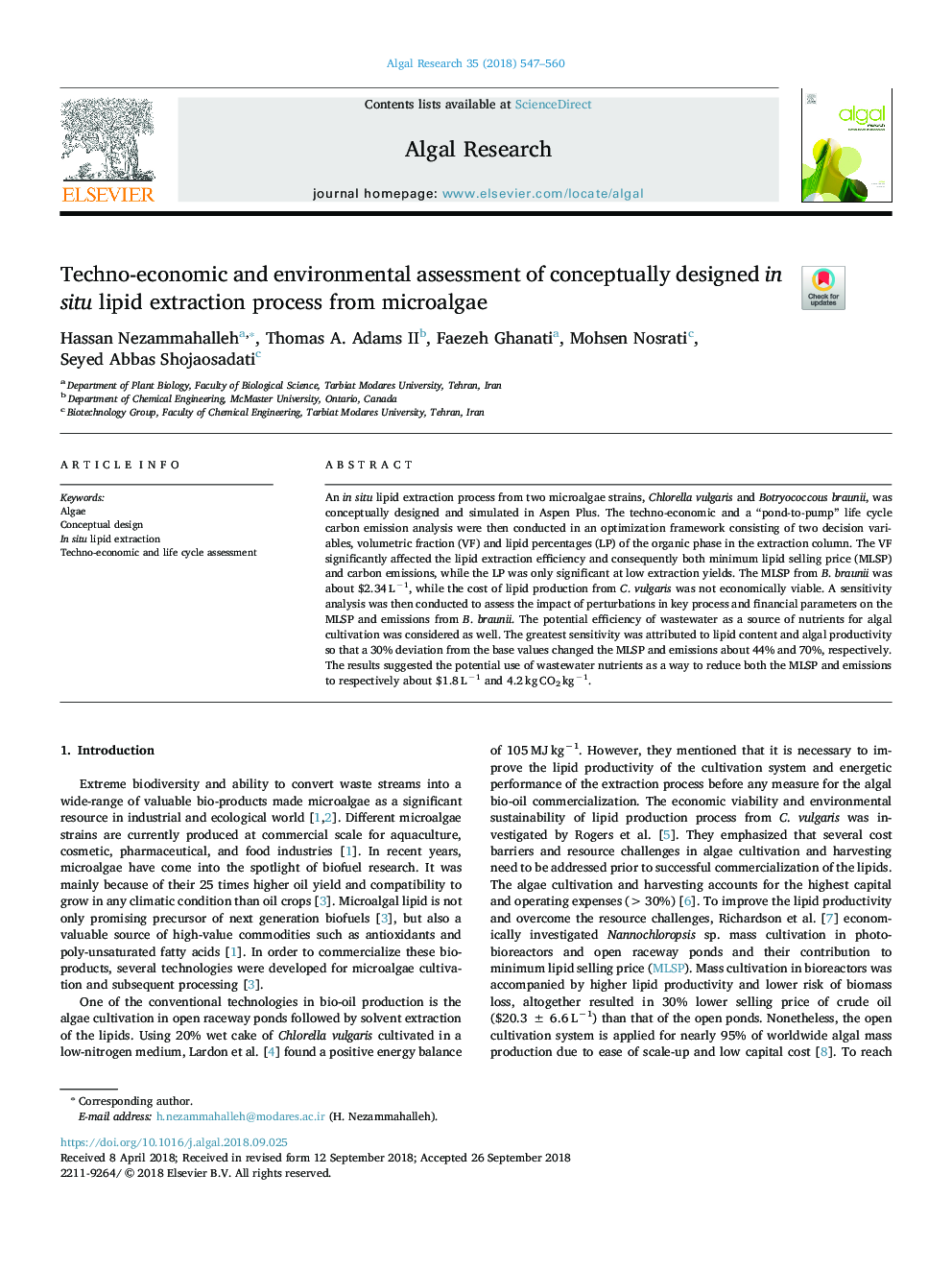| Article ID | Journal | Published Year | Pages | File Type |
|---|---|---|---|---|
| 11032767 | Algal Research | 2018 | 14 Pages |
Abstract
An in situ lipid extraction process from two microalgae strains, Chlorella vulgaris and Botryococcous braunii, was conceptually designed and simulated in Aspen Plus. The techno-economic and a “pond-to-pump” life cycle carbon emission analysis were then conducted in an optimization framework consisting of two decision variables, volumetric fraction (VF) and lipid percentages (LP) of the organic phase in the extraction column. The VF significantly affected the lipid extraction efficiency and consequently both minimum lipid selling price (MLSP) and carbon emissions, while the LP was only significant at low extraction yields. The MLSP from B. braunii was about $2.34â¯Lâ1, while the cost of lipid production from C. vulgaris was not economically viable. A sensitivity analysis was then conducted to assess the impact of perturbations in key process and financial parameters on the MLSP and emissions from B. braunii. The potential efficiency of wastewater as a source of nutrients for algal cultivation was considered as well. The greatest sensitivity was attributed to lipid content and algal productivity so that a 30% deviation from the base values changed the MLSP and emissions about 44% and 70%, respectively. The results suggested the potential use of wastewater nutrients as a way to reduce both the MLSP and emissions to respectively about $1.8â¯Lâ1 and 4.2â¯kgâ¯CO2â¯kgâ1.
Keywords
Related Topics
Physical Sciences and Engineering
Energy
Renewable Energy, Sustainability and the Environment
Authors
Hassan Nezammahalleh, Thomas A. II, Faezeh Ghanati, Mohsen Nosrati, Seyed Abbas Shojaosadati,
